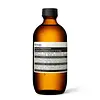What's inside
What's inside
 Key Ingredients
Key Ingredients

 Benefits
Benefits

 Concerns
Concerns

 Ingredients Side-by-side
Ingredients Side-by-side

Water
Skin ConditioningCaprylic/Capric Triglyceride
MaskingGlycerin
HumectantCoco-Caprylate/Caprate
EmollientStearic Acid
CleansingSodium Cocoyl Isethionate
CleansingHelianthus Annuus Seed Oil
EmollientGlyceryl Stearate
EmollientHydroxypropyl Starch Phosphate
Cetyl Alcohol
EmollientQuillaja Saponaria Bark Extract
CleansingSorbitan Olivate
EmulsifyingCaprylyl Glycol
EmollientTocopherol
AntioxidantHydrogenated Lecithin
EmulsifyingTetrahexyldecyl Ascorbate
AntioxidantCocamidopropyl Pg-Dimonium Chloride Phosphate
Stearyl Alcohol
EmollientXanthan Gum
EmulsifyingParfum
MaskingGeraniol
PerfumingLinalool
PerfumingHydroxycitronellal
PerfumingLimonene
PerfumingPhenoxyethanol
PreservativeWater, Caprylic/Capric Triglyceride, Glycerin, Coco-Caprylate/Caprate, Stearic Acid, Sodium Cocoyl Isethionate, Helianthus Annuus Seed Oil, Glyceryl Stearate, Hydroxypropyl Starch Phosphate, Cetyl Alcohol, Quillaja Saponaria Bark Extract, Sorbitan Olivate, Caprylyl Glycol, Tocopherol, Hydrogenated Lecithin, Tetrahexyldecyl Ascorbate, Cocamidopropyl Pg-Dimonium Chloride Phosphate, Stearyl Alcohol, Xanthan Gum, Parfum, Geraniol, Linalool, Hydroxycitronellal, Limonene, Phenoxyethanol
Water
Skin ConditioningOlive Oil PEG-7 Esters
EmollientAmmonium Laureth Sulfate
CleansingGlycerin
HumectantPEG-150 Distearate
EmulsifyingAloe Barbadensis Leaf Juice
Skin ConditioningCitrus Aurantium Bergamia Fruit Oil
MaskingSea Salt
AbrasiveCoco-Betaine
CleansingRosmarinus Officinalis Leaf Oil
MaskingCamellia Sinensis Leaf Extract
AntimicrobialAnthemis Nobilis Flower Oil
MaskingMethylchloroisothiazolinone
PreservativeMethylisothiazolinone
PreservativeLimonene
PerfumingLinalool
PerfumingWater, Olive Oil PEG-7 Esters, Ammonium Laureth Sulfate, Glycerin, PEG-150 Distearate, Aloe Barbadensis Leaf Juice, Citrus Aurantium Bergamia Fruit Oil, Sea Salt, Coco-Betaine, Rosmarinus Officinalis Leaf Oil, Camellia Sinensis Leaf Extract, Anthemis Nobilis Flower Oil, Methylchloroisothiazolinone, Methylisothiazolinone, Limonene, Linalool
Ingredients Explained
These ingredients are found in both products.
Ingredients higher up in an ingredient list are typically present in a larger amount.
Glycerin is already naturally found in your skin. It helps moisturize and protect your skin.
A study from 2016 found glycerin to be more effective as a humectant than AHAs and hyaluronic acid.
As a humectant, it helps the skin stay hydrated by pulling moisture to your skin. The low molecular weight of glycerin allows it to pull moisture into the deeper layers of your skin.
Hydrated skin improves your skin barrier; Your skin barrier helps protect against irritants and bacteria.
Glycerin has also been found to have antimicrobial and antiviral properties. Due to these properties, glycerin is often used in wound and burn treatments.
In cosmetics, glycerin is usually derived from plants such as soybean or palm. However, it can also be sourced from animals, such as tallow or animal fat.
This ingredient is organic, colorless, odorless, and non-toxic.
Glycerin is the name for this ingredient in American English. British English uses Glycerol/Glycerine.
Learn more about GlycerinLimonene is a fragrance that adds scent and taste to a formulation.
It's found in the peel oil of citrus fruits and other plants such as lavender and eucalyptus. The scent of limonene is generally described as "sweet citrus".
Limonene acts as an antioxidant, meaning it helps neutralize free radicals.
When exposed to air, oxidized limonene may sensitize the skin. Because of this, limonene is often avoided by people with sensitive skin.
The term 'fragrance' is not regulated in many countries. In many cases, it is up to the brand to define this term. For instance, many brands choose to label themselves as "fragrance-free" because they are not using synthetic fragrances. However, their products may still contain ingredients such as essential oils that are considered a fragrance.
Learn more about LimoneneLinalool is a fragrance and helps add scent to products. It's derived from common plants such as cinnamon, mint, citrus, and lavender.
Like Limonene, this ingredient oxidizes when exposed to air. Oxidized linalool can cause allergies and skin sensitivity.
This ingredient has a scent that is floral, spicy tropical, and citrus-like.
Learn more about LinaloolWater. It's the most common cosmetic ingredient of all. You'll usually see it at the top of ingredient lists, meaning that it makes up the largest part of the product.
So why is it so popular? Water most often acts as a solvent - this means that it helps dissolve other ingredients into the formulation.
You'll also recognize water as that liquid we all need to stay alive. If you see this, drink a glass of water. Stay hydrated!
Learn more about Water